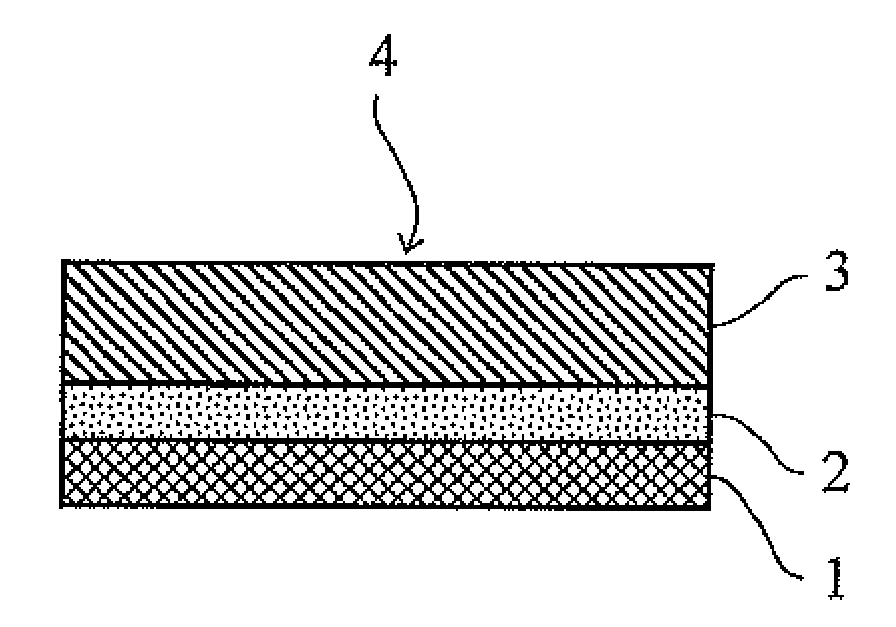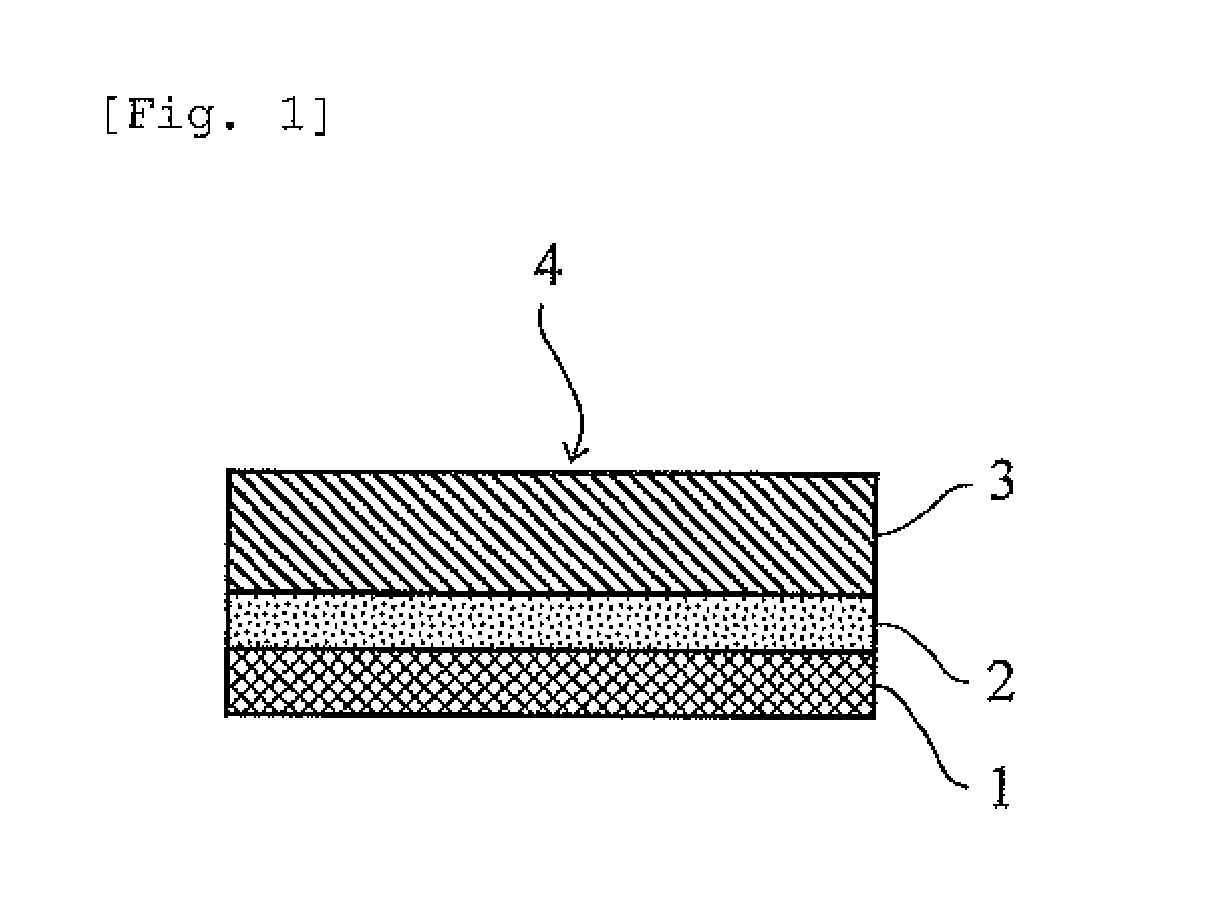Laminate
a technology of laminates and laminates, applied in the field of laminates, can solve the problems of poor anchoring ability of resin layers, failure to protect laminates from “warping”, and failure to protect laminates from “warping”, and achieve the effects of satisfactory workability, less causes of transparency reduction, and high transparency
- Summary
- Abstract
- Description
- Claims
- Application Information
AI Technical Summary
Benefits of technology
Problems solved by technology
Method used
Image
Examples
preparation example 1
Preparation of Pressure-sensitive Adhesive Layer (1)
[0081]Initially, a mixture was prepared by blending 69 parts by weight of 2-ethylhexyl acrylate (2EHA), 30 parts by weight of 2-methoxyethyl acrylate (2MEA), 1 part by weight of 4-hydroxybutyl acrylate (4HBA), and 1 part by weight of acrylic acid (AA). The mixture was combined with photoinitiators, i.e., 0.05 part by weight of the trade name “IRGACURE 184” supplied by Ciba Specialty Chemicals Corporation and 0.05 part by weight of the trade name “IRGACURE 651” supplied by Ciba Specialty Chemicals Corporation, irradiated with an ultraviolet ray so as to have a viscosity of about 20 Pa·s as measured with a BH viscometer using a No. 5 rotor at 10 rpm and at a measurement temperature of 30° C., and thereby yielded a prepolymer composition in which part of the monomer components was polymerized.
[0082]The prepolymer composition (100 parts by weight) was combined with 0.01 part by weight of 1,3-bis(N,N-diglycidylaminomethyl)cyclohexane [t...
preparation example 2
Preparation of Pressure-Sensitive Adhesive Layer (2)
[0086]A pressure-sensitive adhesive layer (2) (with a separator) was prepared by the procedure of Preparation Example 1, except for using 1,6-hexamethylene diisocyanate [the trade name “DURANATE” supplied by Asahi Kasei Chemicals Corporation] instead of 1,3-bis(N,N-diglycidylaminomethyl)cyclohexane [the trade name “TETRAD C” supplied by MITSUBISHI GAS CHEMICAL COMPANY, INC.].
preparation example 3
Preparation of Thermoplastic Resin Layer (1)
[0087]An EVA [the trade name “EVAFLEX EV550” supplied by DUPONT-MITSUI POLYCHEMICALS CO., LTD, melting point: 89° C.] was heated and melted at a temperature of 180° C., extruded and molded through a T die and dried to form a thermoplastic resin layer (1) having a final thickness (thickness of the pressure-sensitive adhesive layer) of 400 μm. This had a total luminous transmittance of 90%.
PUM
| Property | Measurement | Unit |
|---|---|---|
| thickness | aaaaa | aaaaa |
| peel strength | aaaaa | aaaaa |
| luminous transmittance | aaaaa | aaaaa |
Abstract
Description
Claims
Application Information
 Login to View More
Login to View More - R&D
- Intellectual Property
- Life Sciences
- Materials
- Tech Scout
- Unparalleled Data Quality
- Higher Quality Content
- 60% Fewer Hallucinations
Browse by: Latest US Patents, China's latest patents, Technical Efficacy Thesaurus, Application Domain, Technology Topic, Popular Technical Reports.
© 2025 PatSnap. All rights reserved.Legal|Privacy policy|Modern Slavery Act Transparency Statement|Sitemap|About US| Contact US: help@patsnap.com


